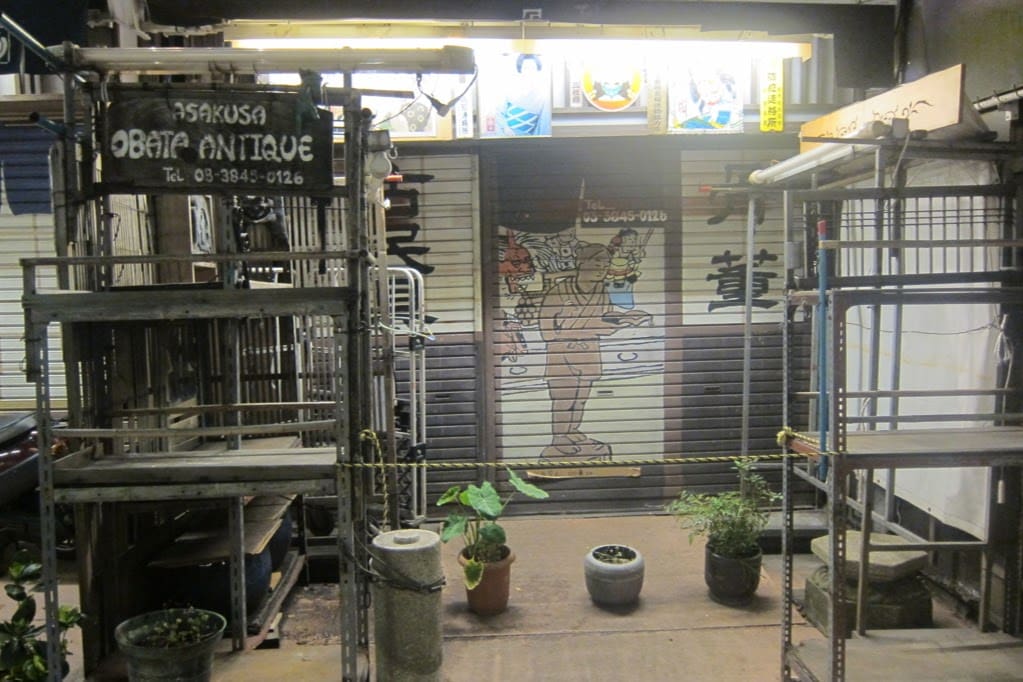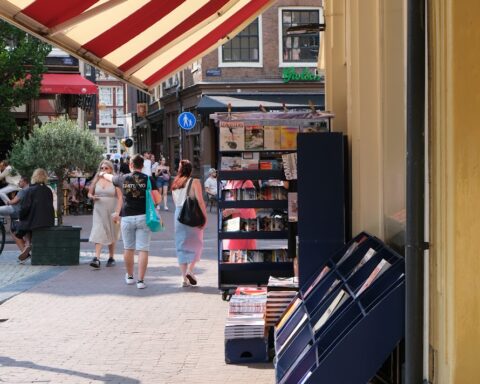Tokyo On Foot
I got his first book, Tokyo On Foot, last year, after contemplating for many moons, whether dropping serious dollars was worth getting a book filled with drawings only. The book ended up being my all-time favourite. I reread it countless times and at times it cheers me up as well. That book, along with Pretty Good Number One, aspired my second trip to Japan.
ManaBeShima Island Japan
All that, plus the tag “One island, two months, one minicar, sixty crabs, eight bites, and fifty shots of shochu“, I didn’t need another reason to get the ManaBeShima Island Japan right there and then. I finished it yesterday.
I have seen the original version of the book before. In the French embassy’s library, but at that time I wasn’t aware that it’s Florent Chavout’s. Even then, equipped with less than 1% of familiar French vocabulary, I happily flipped through the pages looking at the pictures.
I like both of his books. It’s written in the first-person perspective and experiences all by his own drawings. Fantastic drawing skill if I may add. This book is even better more than the earlier one, maybe because he writes in a more personal way, with more anecdotes. Or maybe because by the time I read Tokyo On Foot I have been to Tokyo, meanwhile, ManaBeShima Island Japan inspires me to visit the small islands in Japan.
Oh, I want it so much that I am trying to convince Fafa to explore Japan tiny islands next year.
Japan Culture Checklist
The book also inspires me to: eat somen, send Florent a hand-drawn thank you card, go fishing, draw, eat Managatsuo sashimi, make a Zine of Japan or Melbourne, be nicer to people, make the “temple special” pink Onigiri, see the inside of Reizo san’s house, drive a mini car, catch Umibotaru, pet a tako and do the Tanko Bushi dance.
In short, I’d love to move to the islands of Japan, live there and embrace the Japanese culture as much as I can
Maybe then I would meet nice friends like the Santoras and Nakamuros, too. Though my favourite character of the Manabeshima island, the one I’d love to befriend, is the unnamed vagabond.
I recommend this book to fellow Japan and or Florent Chavouet books’ admirers.
All that, plus the tag “One island, two months, one minicar, sixty crabs, eight bites, and fifty shots of shochu“, I didn’t need another reason to get the ManaBeShima Island Japan right there and then. I finished it yesterday.
I have seen the original version of the book before. In the French embassy’s library, but at that time I wasn’t aware that it’s Florent Chavout’s. Even then, equipped with less than 1% of familiar French vocabulary, I happily flipped through the pages looking at the pictures.
I like both of his books. It’s written in the first-person perspective and experiences all by his own drawings. Fantastic drawing skill if I may add. This book is even better more than the earlier one, maybe because he writes in a more personal way, with more anecdotes. Or maybe because by the time I read Tokyo On Foot I have been to Tokyo, meanwhile, ManaBeShima Island Japan inspires me to visit the small islands in Japan.
Oh, I want it so much that I am trying to convince Fafa to explore Japan tiny islands next year.
Japan Culture Checklist
The book also inspires me to: eat somen, send Florent a hand-drawn thank you card, go fishing, draw, eat Managatsuo sashimi, make a Zine of Japan or Melbourne, be nicer to people, make the “temple special” pink Onigiri, see the inside of Reizo san’s house, drive a mini car, catch Umibotaru, pet a tako and do the Tanko Bushi dance.
In short, I’d love to move to the islands of Japan, live there and embrace the Japanese culture as much as I can
Maybe then I would meet nice friends like the Santoras and Nakamuros, too. Though my favourite character of the Manabeshima island, the one I’d love to befriend, is the unnamed vagabond.
Pretty Good Number One
I read Pretty Good Number One: An American Family Eats Tokyo by Matthew Amster-Burto.
I laughed, nodded in agreement, and instantly fell in love with the writing. This book also made my eyes watery and spoke to me on many levels.
I seriously need to go back to Japan again! Half through this book I think this guy talks way too detailed about Japanese food, where is the discussion about Mount Fuji and the likes, only to realize he is a food critic. Silly me.
Matthew writes in first-person perspective and his deep love for Japanese food. My favourite person in this book is his daughter, Iris, who is going to celebrate her 21 birthday in a karaoke parlour in Japan. Sounds like a fantastic plan Iris. Ohayo!
This book is for someone who loves Japan, goes to Japan, went to Japan and doesn’t know anything about Japan, but is willing to risk falling in love with it.
Pretty Good Number One is a pretty damn good book about Japan.
The Perfect World of Miwako Sumida
It has been months since I stayed past my bedtime to finish a book. The Perfect World of Miwako Sumida made me do just that yesterday. I turned off my Kindle, only leaving the epilogue part unread. Only a few things can match the luxury of reading in bed right after you wake up. And the last few pages of The Perfect World of Miwako Sumida would be a perfect companion to savour at that moment. Which is exactly what I did right before I wrote this post.
I found out about The Perfect World of Miwako Sumida only a few hours before reading it while browsing through the Avid Readers event catalogue online.
The first thing that caught my attention was the name “Sumida” — it must be about Japan. And as you know, anything to do with Japan interests me. I then went on to read the synopsis. The first paragraph said:
Miwako Sumida is dead.
That was all I needed.
I’d read the book for those two reasons alone. But then, while searching what’s the best (ie: cheapest) way I could get it, I realized that An Indonesian-born Singapore female writer, Clarissa Goenawan, wrote the Perfect World of Miwako Sumida. I don’t think I have ever read any Japanese fiction written by a non-Japanese before, let alone by someone I share a certain degree of identity with.
I feverishly waited for the workday to be over. I finished my dinner, took a shower, and told Fafa that I was retiring to bed early today. With a final click on a button that says $14.99, I entered The Perfect World of Miwako Sumida.
The book was written from three different perspectives, none by Miwako Sumida. Though all of them centring around her. The story gives equal importance to the other three characters and their life.
The Perfect World of Miwako Sumida is also layered with many sub-stories and details which add depth to the novel — from the watch that Miwako wore, the Salt Studio to the Secret Diary Zine — turning it into one delicious read.
It also took me to all the familiar places I have been yearning to return to in Japan — from the English bookstore, Shinjuku train station, the convenience store, and the shrine. And then there was the part set in a small village below the valley, which made me pause to daydream about my Kumano Kodo pilgrimage in September next year in the middle of the night.
Another thing worth mentioning is that the book is written in a distinctive style of Japanese novels, with a bit of absurdity and melancholy, which can be utterly beautiful if not overdone. And Clarrisa managed to do it perfectly.
So beautifully written, The Perfect World of Miwako Sumida might top my best book in the 2020 chart. But that’s a decision to be made for another day, as I have just downloaded Clarrisa’s first book, also set in Japan, titled RainBirds.
Update: Avid Readers is hosting a free online Queer Book Club on The Perfect World of Miwako Sumida on 4th November and a conversation with the author the day after.
People From My Neighbourhood

I was browsing The Paperback Bookshop’s online catalogue when I saw a book in pink with Japanese type of houses and Sakura tree pictures on it. Titled People From My Neighbourhood, it’s written by Hiromi Kawakami.
Hiromi Kawakami’s first English-translated book was The Strange Weather in Tokyo. I bought it at the WHS at Singapore Changi International Airport and finished reading it on the plane on my way back to Jakarta. It’s the book that topped my reading list in 2014. And I thought that was reason enough to get this book from the bookshop.
When the book came in the mail a week later, I kept it aside, planning to savour it once I had finished my exam. And I ended up reading and finishing it hours right after my exam.
People From My Neighbourhood was a light read, as was The Strange Weather in Tokyo, but it wasn’t nearly as good.
Japanese fiction, at least the ones I gravitate towards, usually are peppered with surrealism and absurdity. Which is something I expected from People From My Neighbourhood, especially since it was the second book of hers that I was reading. But I didn’t expect surrealism to be the book’s main theme.
The book, divided into 36 chapters, discusses the people living in the narrator’s imaginary town (neighbourhood). Each chapter/story went on for a few pages. All were too short of building any connection with the characters. Nor to accept the absurdity of their personality, stories, and or situation. I didn’t understand any of the characters, let alone empathise with or like them.
Except maybe for the middle-aged woman who runs a drinking place called The Love, who puts up the same menu every single day, which includes iced coffee and iced coffee only, no matter the season or weather.
Another good thing about the book was the ending, the book’s last page, which I very much enjoyed. But that’s it. Nothing else.
Only now, when I am typing this, I realize People From My Neighbourhood was the third Hiromi Kawakami book I have read. Last year I eagerly anticipated and was utterly disappointed by The Ten Love of Mr Nishino. I only half-read it as I couldn’t continue reading after a paragraph somewhere in the middle of the book put me off so much.
Hiromi Kawakami’s novels are not my cup of tea. I know this now. The Strange Weather in Tokyo was just a beautiful one-off. Read it if you are into Japanese fiction and gratify more towards Haruki Murakami’s style of writing instead of Banana Yoshimoto’s.
The Nakano Thrift Shop
I finished The Nakano Thrift Shop in a week. This is the second book of Kawakami Hiromi that I devoured within days. I really enjoy her writing as it could easily transport me back to Japan. Her writing is easier to digest than Haruki Murakami’s, which I also enjoy.
I wonder if any other Japanese writer has the same writing style? Or maybe I should finish other books waiting on our bookshelf (Curvy Yoga and The Tarot Life Planner) to be read and loved before getting another Japanese Lit.
Follow me on Instagram @KultureKween for more recent updates.






[…] specialities, served in the ryokan’s room, is one of the many traditions in the Japanese culture I truly […]
[…] Tsuboyu, one of the oldest onsens in Japan, and staying in Yumino village ought to be in your Japanese culture things to […]
[…] Books aside, every single bookshop in London has its own tote bag. Obviously, I wanted them all. But Fafa told me I could only get one as we already have at least ten random tote bags at home – okay valid reasoning. In the end, I chose a mini tote bag from Bricklane Bookshop, which I have been carrying my work lunch in. […]